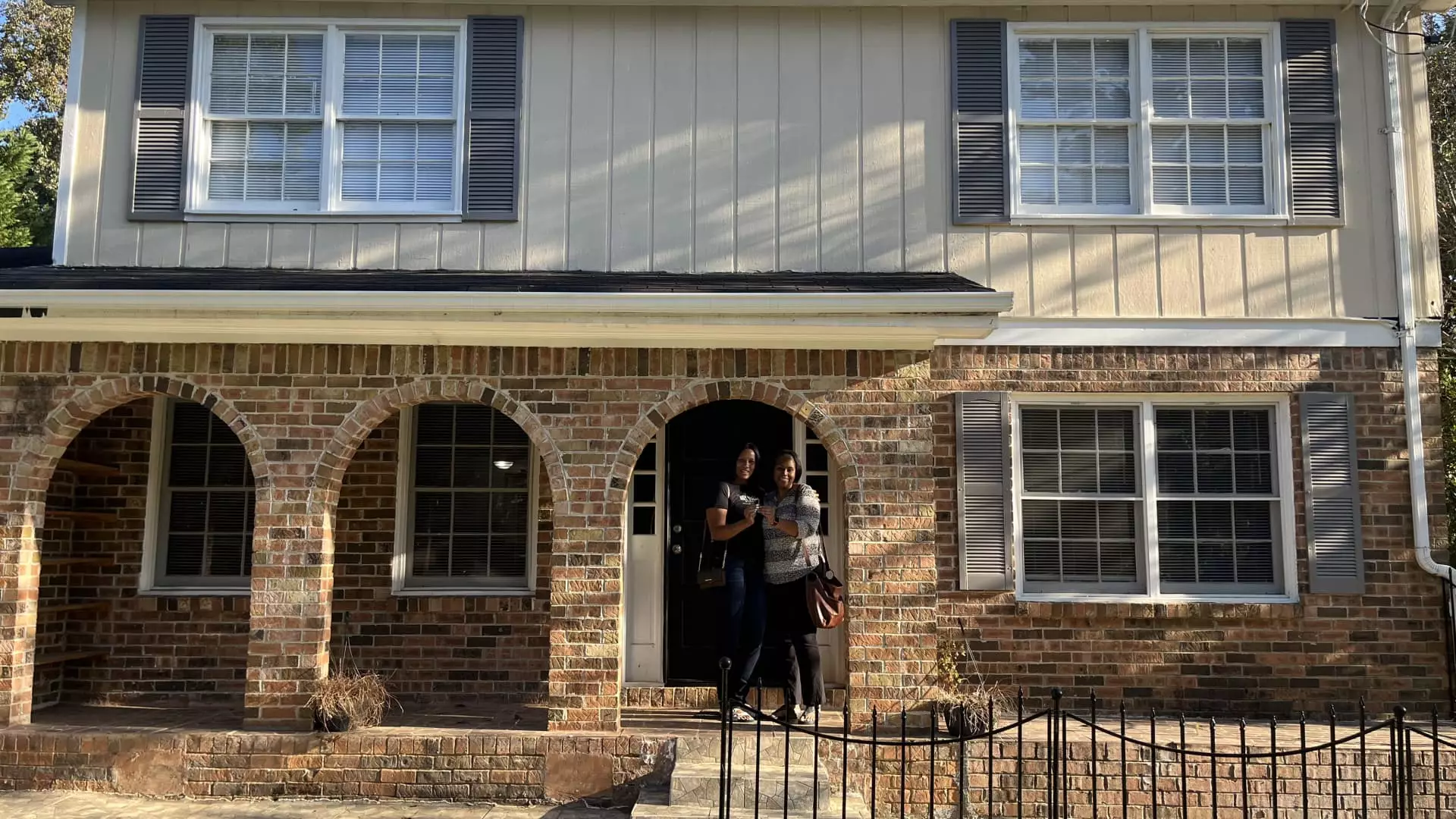The quest for affordable housing is increasingly becoming a monumental hurdle for many individuals and families throughout the United States. In major cities like Atlanta, rising rents coupled with a challenging application process can leave potential renters feeling disheartened. The situation is especially tough for people like 30-year-old social worker When Will Hunnicutt, who faced challenges affording a two-bedroom apartment while trying to meet strict income-to-rent ratios. Such real-life narratives underscore a broader reality: the daunting steps toward homeownership are often met with systemic barriers and unforeseen hurdles that can discourage even the most determined buyers.
Economic experts have warned that severe disparities in income and housing prices are exacerbating the dream of owning a home for many Americans. The demand for affordable housing is relentless, with statistics indicating that individuals aiming to buy a standard U.S. home require an annual income of $113,520—35% more than the national average. Such stark figures often lead to an inescapable cycle of rent rather than ownership, and many face an uphill battle in accumulating sufficient savings for a down payment.
While the challenges of homeownership are significant, innovative solutions aimed at assisting prospective buyers are emerging. Down payment assistance programs have gained traction as viable avenues for those struggling to save enough to cover initial home-buying costs. These programs vary widely, originating from various sources such as state agencies, nonprofit organizations, and financial institutions, all designed to alleviate the financial pressure of obtaining homeownership.
Studies show that nearly 40% of non-homeowners cite a lack of savings as their primary obstacle to buying a home, further highlighting the importance of support networks and education programs. Many down payment assistance initiatives prioritize first-time homebuyers or those who meet specific income qualifications, creating tailored solutions to combat broader economic inequalities. Opportunities to receive substantial financial support can range from $9,000 to $20,000, providing a meaningful boost for individuals eager to stake their claim in the housing market.
Acquiring assistance often comes with prerequisites, such as completing homebuyer education courses designed to equip potential buyers with the knowledge they need to navigate the complex world of home financing. Understanding the nuances of mortgages, interest rates, and additional costs associated with homeownership is crucial for making informed decisions. Participants may also need to partner with specific lenders or demonstrate certain savings benchmarks to qualify for support.
This educational component is a necessary framework, particularly for marginalized buyers who might not have family support for down payments. It’s a recognition that traditional pathways to homeownership may not be accessible to everyone, particularly for minority groups disproportionately affected by systemic barriers in the housing market. As highlighted by housing advocates, targeted programs aimed at first-generation buyers represent an affirmative step toward equity in homebuyer access.
Despite the common belief that a 20% down payment is mandatory, research suggests this is not the case. According to a updated survey by the National Association of Realtors, first-time buyers often put down approximately 8% on average. For certain mortgage options, down payments may be as little as 3.5%, or even 0% in some specific scenarios. This information can reshape individuals’ financial strategies and encourage more potential homeowners to act.
However, it’s essential to keep in mind that lower down payments often lead to the requirement of private mortgage insurance (PMI), which adds to monthly costs. Therefore, it is critical for buyers to comprehend the full financial implications of their decisions, including long-term interests and costs that might arise.
In an effort to support future homeowners, financial advisors usually emphasize prudent saving strategies over speculative investments—especially for those whose timelines for purchasing a home are relatively short, spanning three to five years. High-yield savings accounts, Certificates of Deposit (CDs), and Treasury bills represent low-risk options to safely grow savings rather than exposing them to market volatility.
While initiatives like Roots aim to facilitate investment and wealth building among renters, the consensus among financial experts suggests that establishing a safety net through savings should remain a priority for aspiring buyers. Ultimately, those should not gamble the future of their homeownership on market fluctuations but rather secure their financial health with steady and stable growth.
Navigating the complex dynamics of the housing market requires not only the financial resources but also an informed strategy that encompasses savings, available assistance programs, and educational opportunities. Homeownership should not be seen as merely an aspiration but as an attainable goal provided there is access to the right tools and resources. As systemic barriers continue to challenge equitable access to housing, collective efforts from communities, organizations, and policymakers are necessary to pave the way for a more inclusive future in homeownership.

